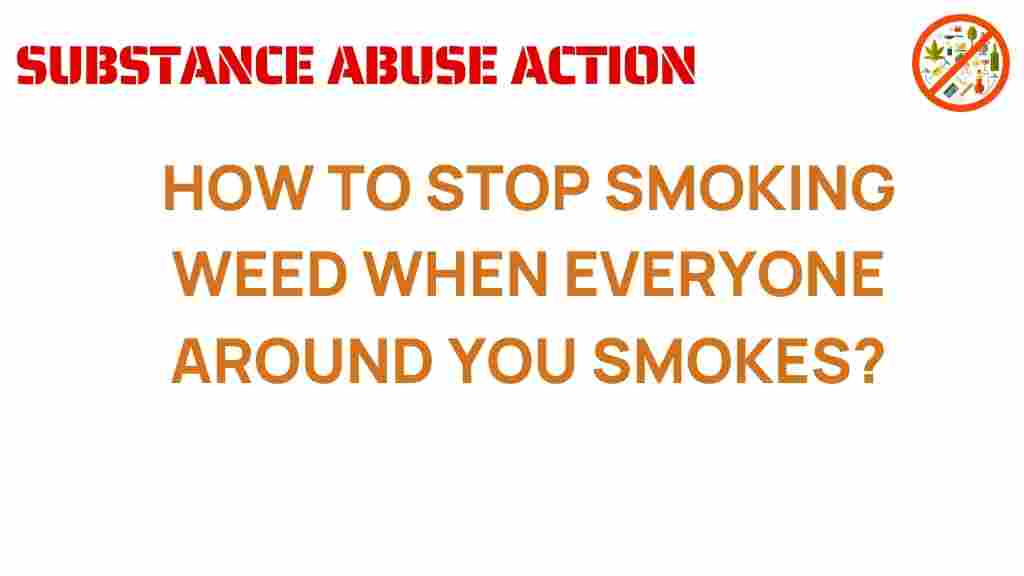Stop Smoking Weed: Breaking Free in a Smoky Environment
In a world where marijuana use is becoming increasingly normalized, breaking free from its grasp, especially in a smoky environment, can be a daunting journey. If you find yourself wanting to stop smoking weed but feel overwhelmed by peer pressure, addiction, and environmental cues, you are not alone. This article will guide you through the process of recovery, highlight the importance of making healthy choices, and offer strategies for building a robust support system. Together, we will explore how to prioritize mental health, embrace personal growth, and implement lifestyle changes that lead to a fulfilling, weed-free life.
Understanding Addiction and Peer Pressure
Before diving into the steps to stop smoking weed, it’s crucial to understand the nature of addiction and the role of peer pressure. Addiction can be a complex condition, often characterized by compulsive drug-seeking behavior despite harmful consequences. Here are some key points to consider:
- Physical Dependence: Your body may develop a tolerance to THC, leading to increased use and dependence.
- Psychological Addiction: The emotional aspect of addiction can make quitting particularly challenging.
- Peer Pressure: Social circles can significantly influence your habits. It’s essential to recognize how your environment affects your choices.
Step-by-Step Process to Stop Smoking Weed
Breaking free from the habit of smoking weed requires a strategic approach. Here’s a step-by-step guide to help you navigate this journey:
1. Acknowledge Your Reasons
Start by writing down your personal reasons for wanting to stop smoking weed. Reflecting on these motivations can strengthen your resolve. Common reasons include:
- Improved mental clarity
- Better physical health
- Financial savings
- Stronger relationships
2. Set Clear Goals
Define what success looks like for you. Is it complete abstinence, or are you looking to reduce usage? Setting clear and achievable goals can provide direction in your recovery journey.
3. Identify Triggers
Recognizing the situations, people, or emotions that trigger your urge to smoke weed is vital. Common triggers include:
- Social gatherings with friends who smoke
- Stressful situations
- Feelings of boredom or anxiety
4. Develop Coping Strategies
Once you identify your triggers, develop healthy coping strategies to manage them. Consider:
- Engaging in physical activities like running or yoga
- Practicing mindfulness and meditation
- Finding new hobbies or interests that occupy your time
5. Build a Support System
Surround yourself with individuals who support your decision to stop smoking weed. This can include:
- Friends and family who respect your choice
- Support groups, both in-person and online
- Therapists or counselors specializing in addiction
6. Communicate Your Intentions
Let your friends and family know about your decision to quit. Open communication can help you gain their support and reduce the likelihood of encountering peer pressure.
7. Keep a Journal
Document your journey by keeping a journal. Write about your feelings, struggles, and achievements. This practice not only promotes self-reflection but also tracks your progress.
Troubleshooting Common Challenges
Even with the best intentions, challenges may arise while trying to stop smoking weed. Here are some common issues and how to tackle them:
1. Withdrawal Symptoms
Many individuals experience withdrawal symptoms when they quit smoking weed, including:
- Insomnia
- Loss of appetite
- Increased irritability
To manage these symptoms:
- Stay hydrated and maintain a balanced diet.
- Engage in regular physical activity to boost your mood.
- Consider seeking professional help if symptoms become overwhelming.
2. Encountering Peer Pressure
Being in a smoky environment can make it tempting to revert to old habits. Here’s how to resist:
- Practice saying “no” confidently to offers of weed.
- Seek out friends who support your decision and spend time with them instead.
- Consider taking breaks from environments that trigger your cravings.
3. Dealing with Cravings
Cravings can be powerful, but they usually pass quickly. Try these strategies:
- Engage in a distraction, like a hobby or a workout.
- Use deep breathing techniques to calm your mind.
- Remind yourself of your reasons for quitting.
Emphasizing Mental Health and Personal Growth
As you navigate your journey to stop smoking weed, it’s essential to prioritize your mental health. Here’s how:
- Practice Self-Care: Make time for activities that nourish your mind and body.
- Seek Professional Help: Therapy can provide valuable tools to cope with addiction.
- Set Personal Growth Goals: Focus on areas of your life you want to improve, such as career, relationships, or health.
Implementing Lifestyle Changes
To maintain your commitment to quitting, consider implementing long-term lifestyle changes. Here are some suggestions:
- Healthy Eating: Fuel your body with nutritious foods to improve your overall well-being.
- Regular Exercise: Physical activity can boost your mood and reduce stress, making it easier to resist cravings.
- Mindfulness Practices: Meditation, yoga, and deep breathing can enhance your mental clarity and emotional resilience.
For more resources on maintaining a healthy lifestyle, check out this comprehensive guide.
Conclusion: Embracing a New, Smoke-Free Life
Deciding to stop smoking weed is a courageous step toward personal freedom and healthier living. By acknowledging the challenges posed by addiction and peer pressure, and by implementing effective strategies for recovery, you can successfully break free from the influence of marijuana, even in a smoky environment. Remember that the journey may be difficult, but the rewards of improved mental health, personal growth, and a fulfilling lifestyle are well worth the effort.
Surround yourself with a supportive community, prioritize your well-being, and remain steadfast in your commitment to change. Embrace this opportunity for a fresh start and a brighter future without the haze of addiction.
This article is in the category Recovery and created by SubstanceAbuseAction Team
